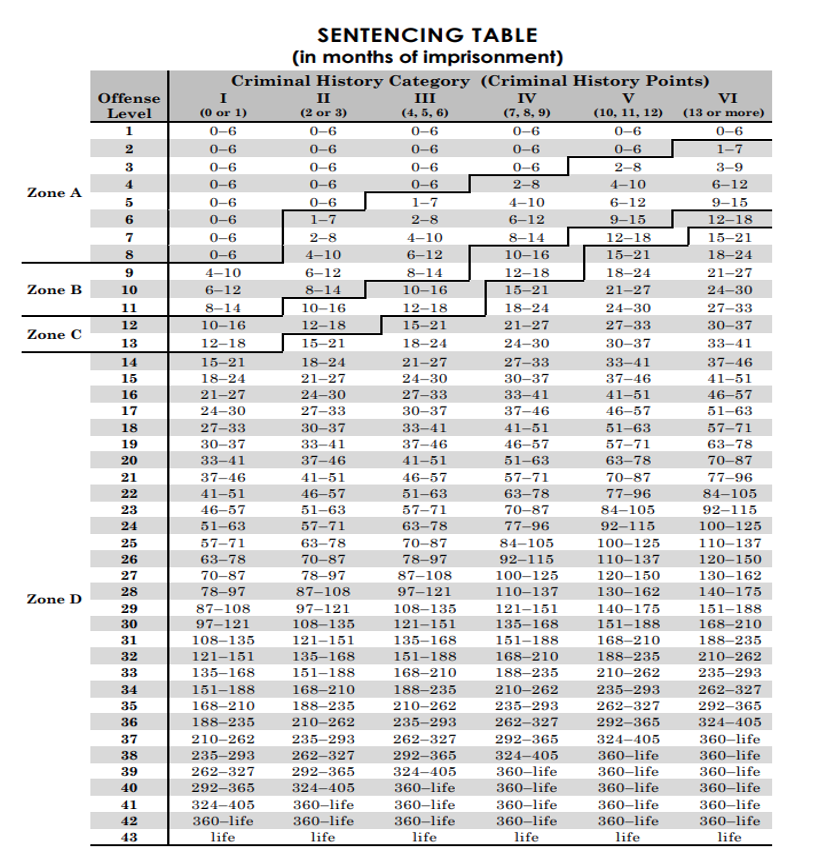Federal sentencing law is a complicated mixture of statutory penalty provisions, enhancements, and Sentencing Guidelines, all of which have developed piecemeal over the last thirty years. Depending on the circumstances derived from each specific federal case, the Sentencing Guidelines operate as a point system. Each type of crime contains specific categories that increase your potential jail time or decrease it.
Offense Conduct
Chapter Two of the Sentencing Guidelines breaks down federal offenses and divides them into parts and relevant sections. Each federal offense may be covered under one statute or could be their own separate statute. Each offense has a corresponding base offense level and may have one or more specific offense characteristics that may increase or decrease the offense level. As explained above, the Sentencing Guidelines reflect a scorecard in which you want the lowest score possible before getting to the chart used by Federal District Court Judges. Certain offenses include offenses against a person, basic economic offenses, offenses involving public officials and violations of federal election campaign laws, offenses involving drugs and narco-terrorism, offenses involving commercial sex acts, minors, and obscenity, and involving individual rights. This is just a snapshot of Chapter Two and the offenses that are included.
Adjustments
Chapter Three is broken down into five parts: (1) victim-related adjustments, (2) role in the offense, (3) obstruction and related adjustments, (4) Multiple counts, and (5) acceptance of responsibility. These adjustments are fact-specific inquiries that do not always apply but are argued by the government when they do. However, there are certain situations in which these would help a defendant. For example, if the defendant was only involved in the federal offense through a mitigating role and was not the leader or main actor in the conspiracy, they may receive a deduction of four levels.
Criminal History and Criminal Livelihood
The Sentencing Guidelines state that a defendant with a record of prior criminal behavior is more culpable than a first offender and thus deserving of greater punishment. Additionally, the Guidelines purport to protect the public from further crimes of the particular defendant, the likelihood of recidivism and future criminal behavior must be considered.
In order to calculate a defendant’s federal criminal history level, there are five categories that are used. USSG § 4A1.1(a) adds three points for each prior sentencing of imprisonment exceeding one year and one month. Subsection (b) adds two points for each prior sentence of imprisonment of at least sixty days not counted in (a). Subsection (c) adds one point for each prior sentence not counted in (a) or (b), up to a total of four points for this subsection. Subsection (e) adds one point for each prior sentence resulting from a conviction of a crime of violence that did not receive any points under (a), (b), (c) above because such sentence was treated as a single sentence, up to a total of three points for this subsection.
It must be noted that there are a number of caveats in this section. For example, a sentence imposed more than fifteen years prior to the defendant’s commencement of the instant offense is not counted unless the defendant’s incarceration is extended into this fifteen-year period.
Determining the Sentence
Depending on the crime charged and the circumstances of that crime will determine your offense level. Then you would correlate that offense level with a defendant’s criminal history category to determine the application guideline range.


